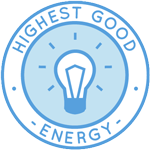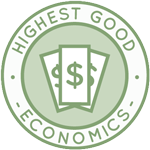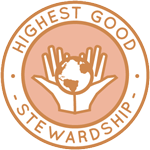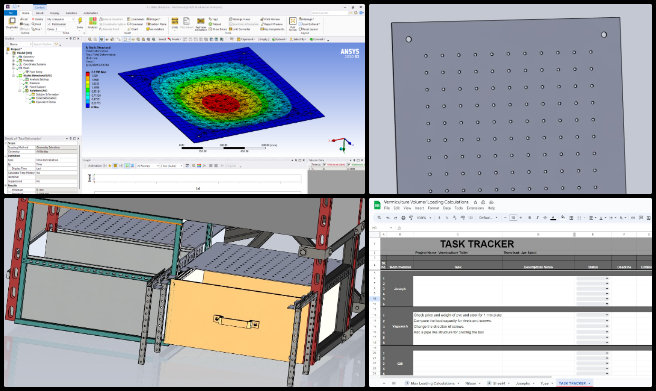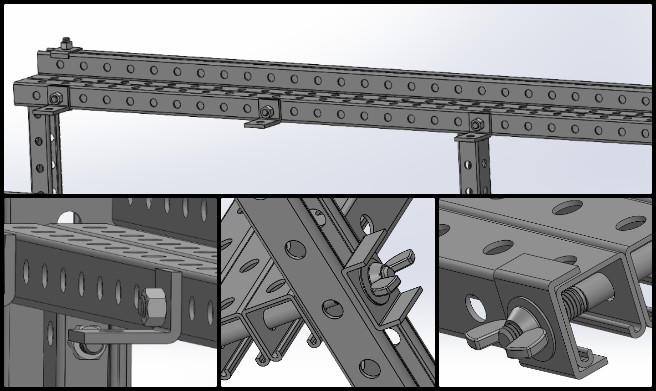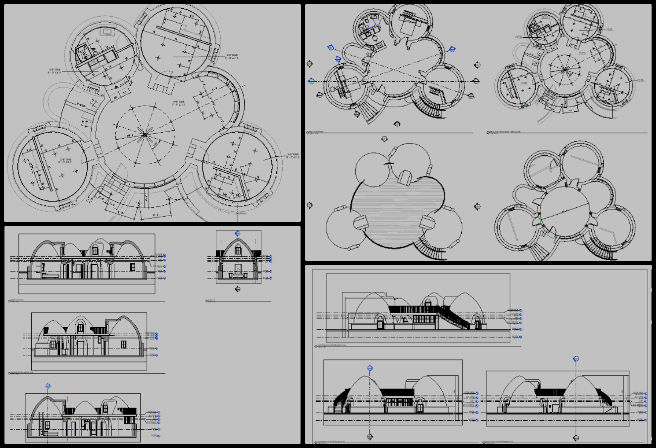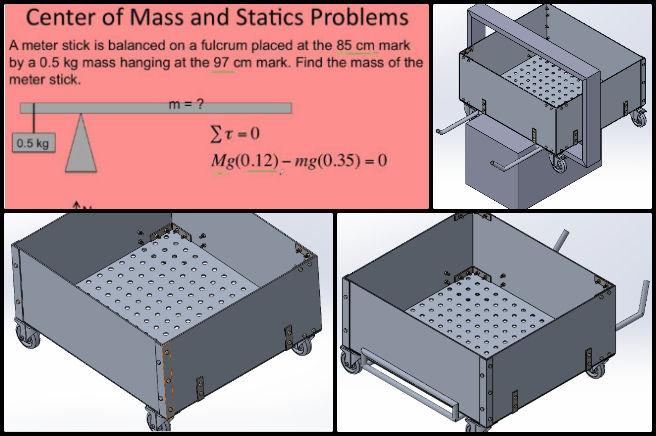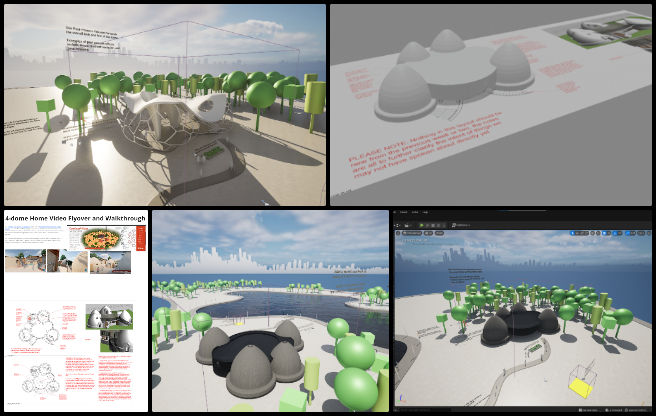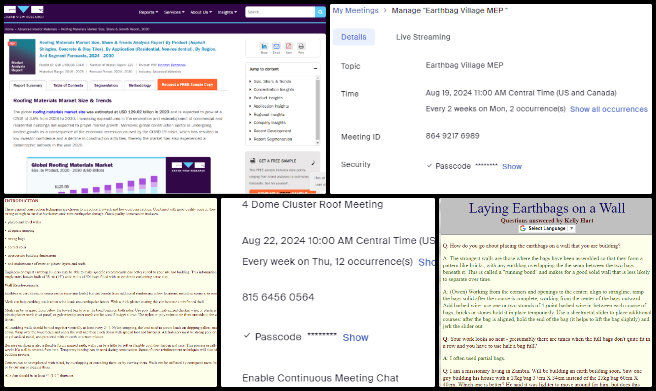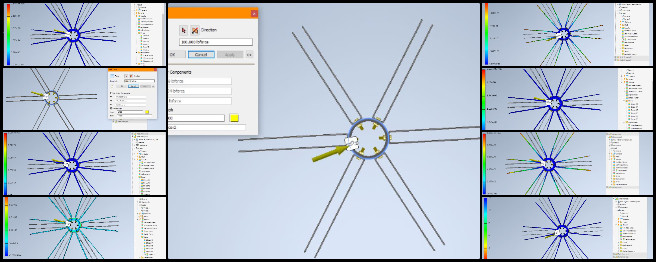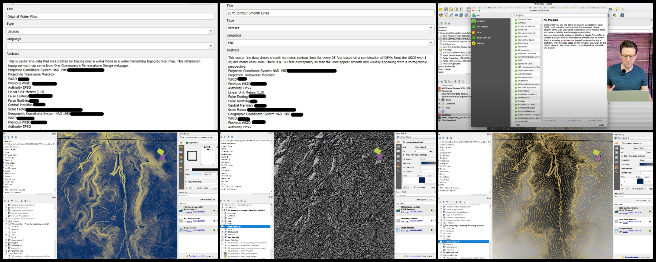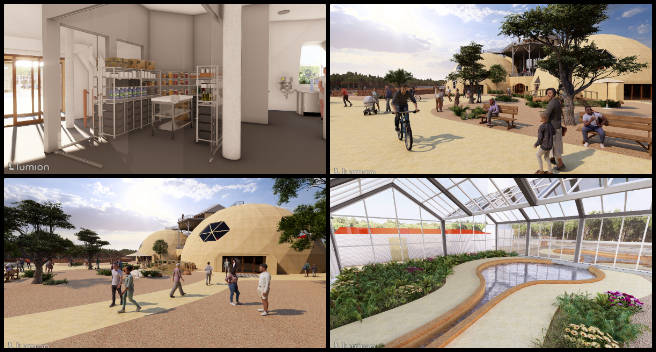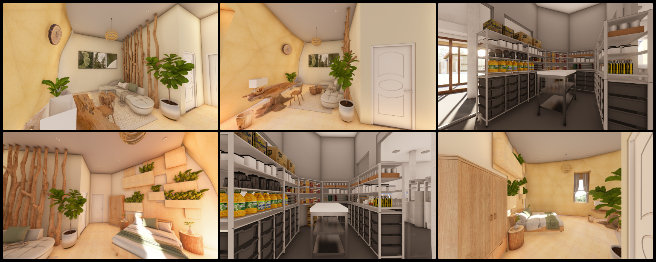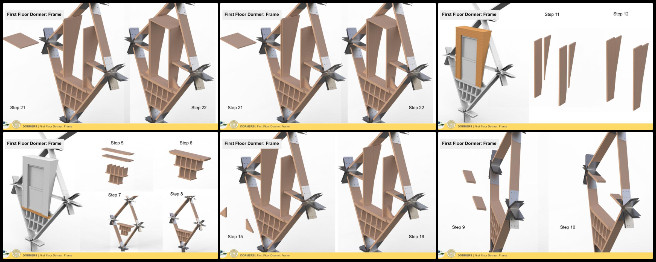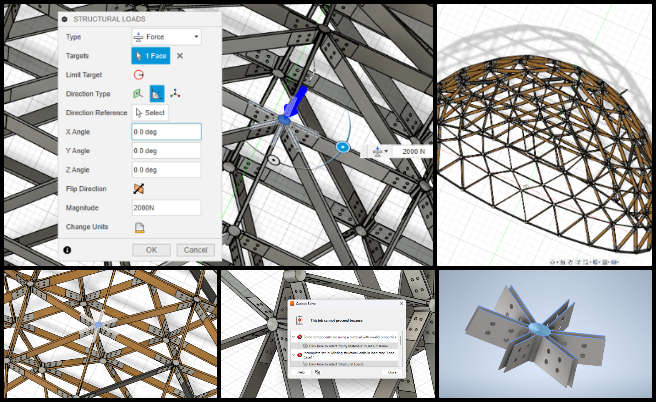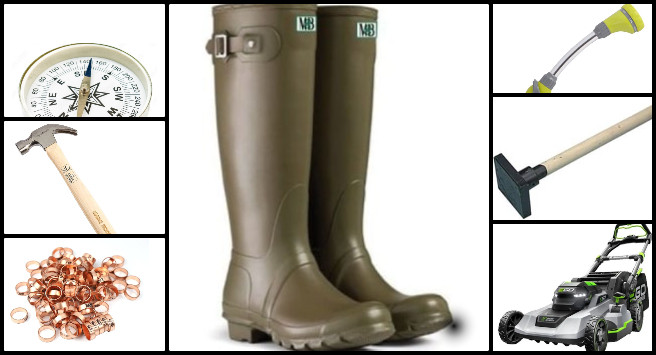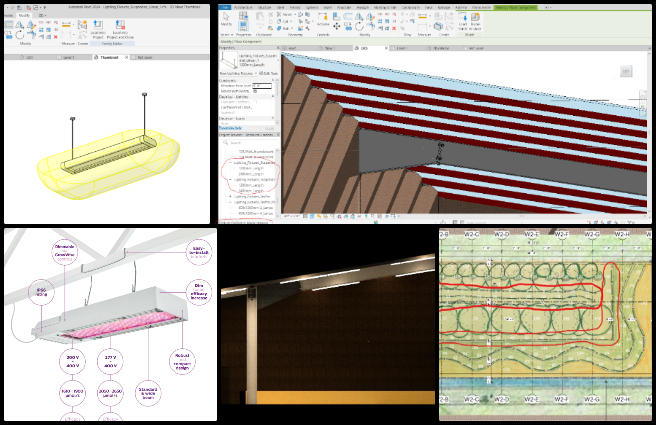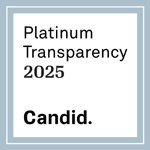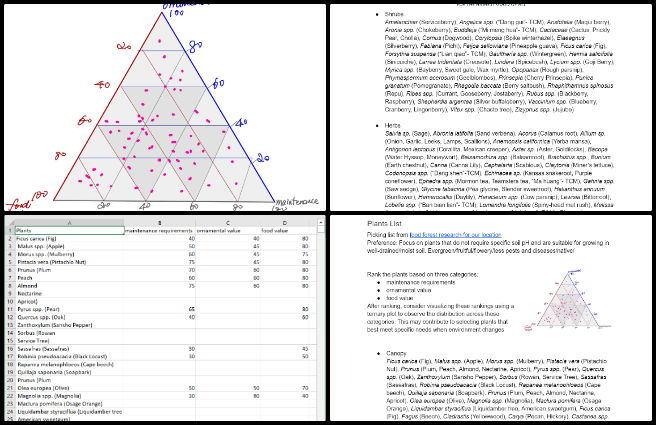
HIGHEST GOOD EDUCATION PROGRESS
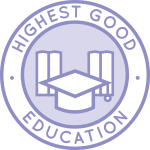 One Community is growing the interconnectedness of human systems through Highest Good education that is for all ages, applicable in any environment, adaptable to individual needs, far exceeds traditional education standards, and more fun for both the teachers and the students. This component of One Community is about 95% complete with only the Open Source School Licensing and Ultimate Classroom construction and assembly details remaining to be finished. With over 8 years of work invested in the process, the sections below are all complete until we move onto the property and continue the development and open sourcing process with teachers and students – a development process that is built directly into the structure of the education program and everything else we’re creating too:
One Community is growing the interconnectedness of human systems through Highest Good education that is for all ages, applicable in any environment, adaptable to individual needs, far exceeds traditional education standards, and more fun for both the teachers and the students. This component of One Community is about 95% complete with only the Open Source School Licensing and Ultimate Classroom construction and assembly details remaining to be finished. With over 8 years of work invested in the process, the sections below are all complete until we move onto the property and continue the development and open sourcing process with teachers and students – a development process that is built directly into the structure of the education program and everything else we’re creating too:
This week, Apoorv Pandey (Mechanical Engineer) continued helping with the engineering details for the Ultimate Classroom part of the Highest Good Education component. He completed the final draft of the Structural Engineering Report for the Ultimate Classroom. His primary focus was to optimize the tables for better presentation and adjust the column widths for each section, which he resolved with input from Jae. Apoorv is now concentrating on formatting the report so that both engineers and laypersons can easily read and understand the document, which requires clear explanations for certain sections and improved captions for the figures and tables. The One Community model of combining forward-thinking education with sustainably built classrooms like this is an excellent example of growing the interconnectedness of human systems. See the collage below for his work.

HIGHEST GOOD SOCIETY PROGRESS
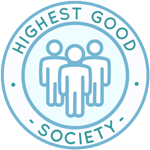 One Community is growing the interconnectedness of human systems through a Highest Good society approach to living that is founded on fulfilled living, the study of meeting human needs, Community, and making a difference in the world:
One Community is growing the interconnectedness of human systems through a Highest Good society approach to living that is founded on fulfilled living, the study of meeting human needs, Community, and making a difference in the world:
This week, the core team completed over 58 hours managing One Community’s volunteer-work review not included above, emails, social media accounts, web development, new bug identification and bug-fix integration for the Highest Good Network software, and interviewing and getting set up new volunteer team members. They also shot and incorporated the video above that talks about growing the interconnectedness of human systems and how growing the interconnectedness of human systems is a foundation of the bigger picture of everything One Community is doing. The image below shows some of this work.

Jia Shu (UX Designer) continued her work on the Highest Good Network phase 3 development that focuses on organizing and tracking the Fulfilled Living aspect of the Highest Good Society component. This week, she collaborated with John on refining the design of Phase 3, focusing on epics, user stories, tasks, and priorities. Feedback on low-fidelity prototypes led to the creation of mid-fidelity versions, and she studied web design and iOS/Android design systems to optimize the user experience. The design system was structured around six epics and their respective user stories, with tasks for each epic. The design work was initiated in Figma, where a basic layout for each function is currently in place. The UI system which includes colors and icons, was also halfway defined, awaiting John’s confirmation. Jia also worked on refining existing elements and defining separate workflows for organizers and members. Based on feedback from Jae’s video, she made several adjustments, including incorporating a QR code scan feature into the check-in process, updating the notification system, enhancing the visual UI for activity attendance rates, and adding filter and rating options to the comments section, along with other minor UI refinements. This work supports growing the interconnectedness of human systems and aligns with One Community’s mission of growing the interconnectedness of human systems. The picture below shows some of this work.
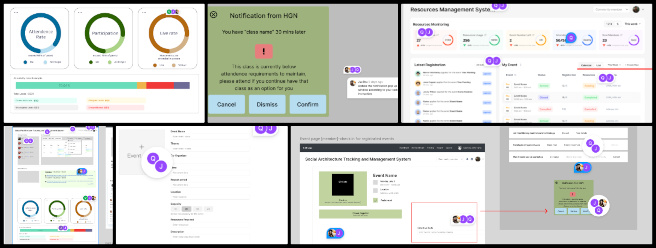
Jiaqi Wu (UX Designer) worked on the third phase of HGN, concentrating on improving the organizer’s view by developing a dashboard. The dashboard now features an overview section, an event resources tracker, and an approval system to streamline event management. In addition to the design and implementation efforts, Jiaqi engaged in discussions with Jae about the future development and potential enhancements of these three key features, ensuring alignment with the project’s overall objectives. This work helps One Community’s mission of growing the interconnectedness of human systems. The following images show her work for the week.
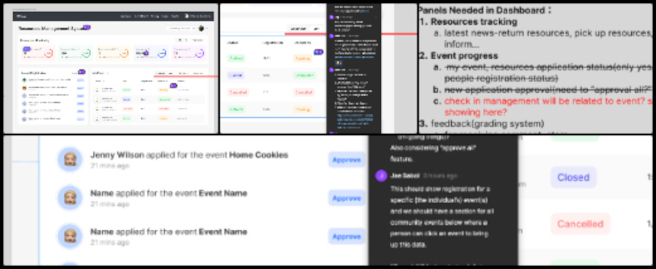
Shireen Kayal (Humanitarian Program Developer & Data Manager) completed two versions of the weekly progress video. She organized the footage and selected fitting background music to enhance the viewing experience. The video showcases a variety of One Community materials and diverse footage that effectively communicates the organization’s cause. The videos are now ready for review. This work helps One Community’s mission of growing the interconnectedness of human systems. The following images show her work for the week.
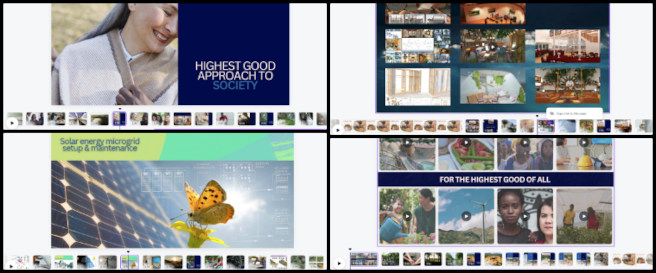
Venkata Jaya Pavan Naru (Network and Cybersecurity Engineer) completed the onboarding checklist thoroughly and reviewed both WordPress and Bluehost. He investigated WordPress and researched to identify potential factors affecting website loading speed, suspecting issues with the SQL database configuration. After examining the database for possible improvements and finding no issues, he explored WordPress plugins that could enhance website performance. Additionally, Jaya had a meeting with Masoom Ahmed to discuss his current objectives and collaboration for migrating HGN to Bluehost. This work helps One Community’s mission of growing the interconnectedness of human systems. The following images show his work for the week.
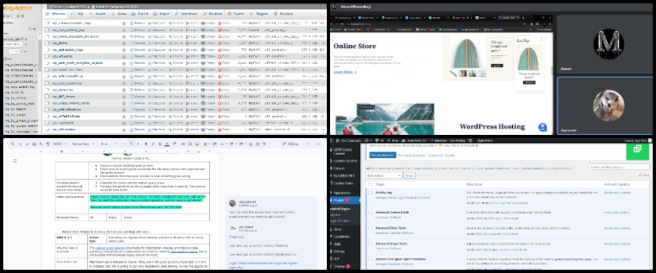
Jin Hua (Website, AdWords, and Analytics Administrator) continued helping with analyzing why our website is having loading problems. He spent hours on the phone with customer service, looking into plugins, data loads, and other possible sources of the problem. This work helps One Community’s mission of growing the interconnectedness of human systems. See below for images related to this.
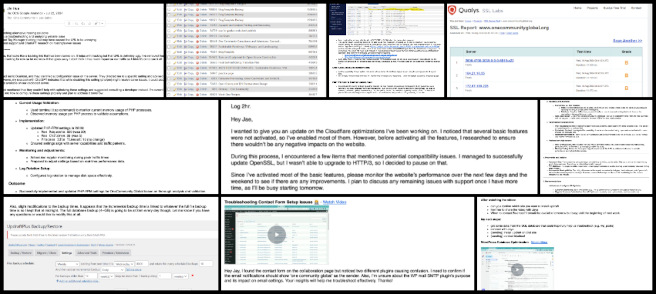
Masoom Ahmed Siddique (Senior Network Engineer) reviewed the onboarding checklist, marking completed items and highlighting required actions in the Action Item and Notes sections. A meeting was set up with Jaya to discuss the One Community website, which includes applications, resources, and user activity. They checked the HGN and One Community sites and reviewed Azure documentation for services, JSON, and SQL. Additionally, they visited Bluehost to assess website capabilities, resource requirements, and the possibility of running multiple websites. This work helps One Community’s mission of growing the interconnectedness of human systems. The following images show his work for the week.

ADMINISTRATION TEAM
The Administration Team’s summary, covering their work administrating and managing most of One Community’s ongoing process for growing the interconnectedness of human systems was managed by Sneka Vetriappan (Data Analyst) and includes Durgeshwari Naikwade (Data Analyst), Hritvik Mahajan (Data Analyst), Ivy Yuwei Li (Project Manager and Team Administrator), Jessica Fairbanks (Administrative Assistant), Kishan Sivakumar (Administative Assistant and Software Team Manager), Michael Juma (Administrative Assistant), Mrudula Chavali (Administrative Assistant and Data Analyst), Olawunmi “Ola” Ijisesan (Administrative and Management Support), Praneeth Reddy Guduru (Data Analyst), Rachna Malav (Data Analyst), Ratna Meena Shivakumar (Data Analyst and Admin), Riddhisha Chitwadgi (Administrative Assistant), Saumit Chinchkhandi (Administrative Assistant and Software Engineer), T R Samarth Urs (Data Analyst), Venkat Reddy Mankala (Data Analyst and Team Administrator), Vibhav Chimatapu (Data Analyst/Admin Assistant) and Zuqi Li (Administrative Assistant and Economic Analyst). This week, Durgeshwari handled two interviews and worked on the “Adv Training Team,” focusing on feedback processes and communication for new trainees, growing the interconnectedness of human systems. Hritvik created collages and edited summaries for the #596 blog, tested PRs, reviewed a video on Slack communication, and set up a Twitter account, among other tasks. Ivy reviewed weekly reporting for her team, updated Dropbox, edited a blog post, and worked on SEO for multiple blogs while beginning to review food procurement plans. Jessica collaborated with Yamilli on the Highest Good Food Rollout Plan, updated the plan page, and reviewed the work of a new team member. Kishan focused on SEO optimization for the weekly update blog and reviewed previously optimized pages. Michael prepared summaries for Reactonauts and Skye teams, tracked admin feedback, and reviewed blog features. Mrudula worked on her weekly blog, organized interviews, provided feedback on new training volunteers’ work, and reviewed technical documents. Ola reviewed PR team managers’ work, ensured documentation accuracy, and managed training compliance. Praneeth reviewed and verified the summaries and links for the DevDynasty team, ensuring proper image formats. Rachna handled interviews, reviewed emails, and resumed work on SEO pages, enhancing growing the interconnectedness of human systems. Ratna prepared the weekly summary, collages, and updated blogs, also scheduling posts for social media. Riddhisha focused on SEO optimization, reviewed and edited multiple blogs, and provided feedback on training work. Saumit interviewed a potential volunteer, tested multiple PRs, identified and resolved a bug, and documented the team’s work. Sneka managed administrative tasks, followed up on documents, and worked on SEO optimization. Samarth evaluated the PR review team’s work, provided feedback, and summarized their efforts in a blog post. Venkat reviewed documentation for the HGN app, incorporated suggestions, and gained access to the WordPress platform. Vibhav reviewed PR Team’s work, created summaries, and enhanced blog SEO. Zuqi organized summaries for the Graphic Design and Alpha Teams, reviewed optimized blogs, and followed up on feedback. One Community’s model for growing the interconnectedness of human systems include developing and maintaining a supportive administration team like this. You can see the work for the team in the image below.
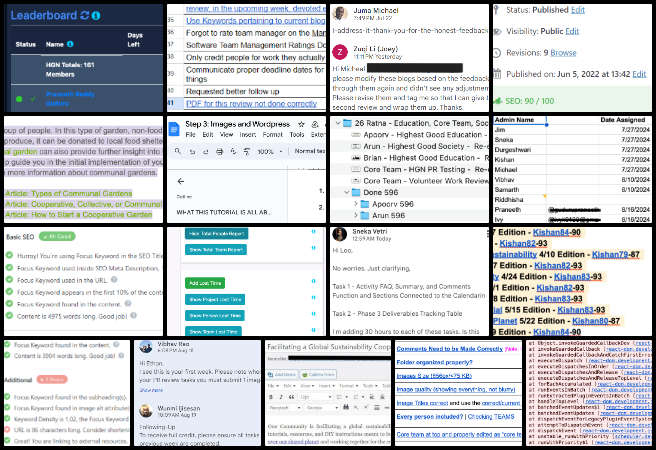
GRAPHIC DESIGN TEAM
The Graphic Design Team’s summary was managed by Zuqi Li (Administrative Assistant and Economic Analyst) and included Helen Ma (Graphic Designer), Junyuan Liu (Graphic Designer, UI/UX Designer) and Maomao Ding (UI/UX Designer), covering their work on graphic designs for growing the interconnectedness of human systems. This week, Helen applied the third design concept to four different recycling pages to test the design system’s effectiveness, finding it to be effective so far. She suggested collaborating with content creators from each recycling materials page to gather impactful facts for the design, allowing her to focus on design rather than researching unfamiliar content. Helen uploaded all four images into the assigned Dropbox for review. Junyuan completed a social media image and began exploring concepts for the next one. He also continued work on the HGN Phase 3 activity, focusing on the FAQ, Summary, and Comments sections connected to the Calendar and Deliverables Tracking Table. This involved designing a new event page to integrate the added information and considering potential layout redesigns for other sections. Maomao completed the first two announcement pages and made iterations based on feedback. She also created four social media graphics, with two using free stock images and two sourced from the existing image library, and reviewed the overall visual consistency to ensure alignment with the brand guidelines. See the Highest Good Society pages for more on how this contributes to growing the interconnectedness of human systems. See the collage below to view some of their work.
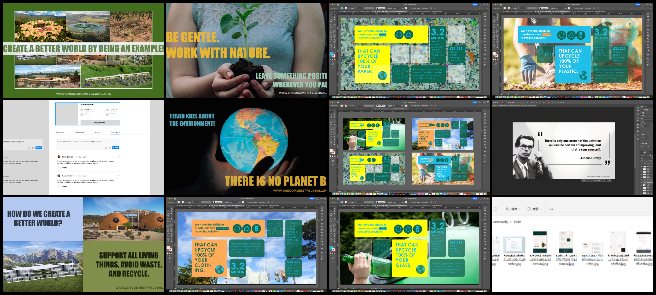
HIGHEST GOOD NETWORK PROGRESS
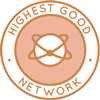 One Community is growing the interconnectedness of human systems through open source Highest Good Network® software that is a web-based application for collaboration, time tracking, and objective data collection. The purpose of the Highest Good Network is to provide software for internal operations and external cooperation. It is being designed for global use in support of the different countries and communities replicating the One Community sustainable village models and related components.
One Community is growing the interconnectedness of human systems through open source Highest Good Network® software that is a web-based application for collaboration, time tracking, and objective data collection. The purpose of the Highest Good Network is to provide software for internal operations and external cooperation. It is being designed for global use in support of the different countries and communities replicating the One Community sustainable village models and related components.
This week, the core team continued their work on the Highest Good Network PRs testing, confirming the fixed PRs and resolving various user interface (UI) bugs. The resolved HGN PRs include functionalities like assigning blue squares with future dates (PR #2496), loading spinners for member lists (PR #2382), warnings for duplicate team names (PR #2516), handling empty project data (PR #2509), and ensuring new project members are included as task resources (PR #2418). Unresolved issues involved UI adjustments for smaller screens (PR #2614, PR #2246), task review permissions (PR #2541), map point deletion inconsistencies (PR #2519), and the People Report page on smaller screens (PR #2005). Additionally, testing was focused on Core Team email accuracy (PR #958) and badge reports (PR #996), identifying discrepancies and raising issues for further investigation. See the Highest Good Society and Highest Good Network pages for more on how this relates to growing the interconnectedness of human systems. The collage below shows some of their work.

ALPHA SOFTWARE DEVELOPMENT TEAM
The Alpha Team’s summary, covering their work on the Highest Good Network software was managed by Lin Khant Htel (Frontend Software Developer) and includes Carlos Gomez (Full-stack Software Developer), Jordy Corporan (Software Engineer) and Logeshwari Renu (Software Engineer). The Highest Good Network software is how we will manage and measure our processes for growing the interconnectedness of human systems across our social architecture, construction, production, and maintenance processes. Carlos addressed Jae’s comments on PR#2503, resolving conflicts and fixing issues, leading to the successful merging of the pull request into the development branch by Jae. Carlos performed a final review and announced the approval on the tm-weekly-summary-dashboard via Slack, GitHub, and Google Docs. He concluded his weekly tasks by suggesting changes in PR#2549 Ivy-invalid-password. Jordy continued to make progress on the unit tests for the emailController, completing tests for the first function inside the controller. Logeshwari created both frontend and backend Git branches for a new task and addressed an issue related to unauthorized error messages in the Team Update API by adding a toaster message to inform users of the error. She also identified and removed a redundant user role check for permission verification in the PuTeam API while editing team codes and verified the functionality of the Admin role’s team code editing after this adjustment. Additionally, Logeshwari discussed with Jae an efficient approach to improving the loading speed of the Weekly Summaries Report through a tab data fix. See the Highest Good Society and Highest Good Network pages for more on how this relates to growing the interconnectedness of human systems. View some of the team’s work in the collage below.
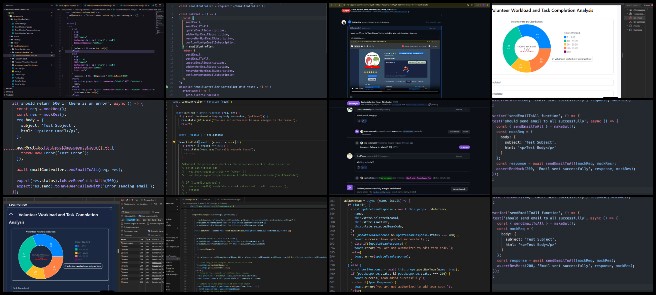
BINARY BRIGADE SOFTWARE DEVELOPMENT TEAM
The Binary Brigade Team’s summary overseeing advancements in the Highest Good Network software was managed by Vijay Anand Pandian (Full Stack Software Engineer) and includes Aaryaneil Nimbalkar (Software Developer), Aditya Sure (Software Engineer), Deepthi Kannan (Software Engineer), Huijie Liu (Software Engineer), Peizhou Zhang (Software Engineer), Sai Sarath Kumar Alavakonda (Software Engineer), Sandhya Adavikolanu (Software Developer) and Sri Sudersan Thopey Ganesh (Software Engineer). The Highest Good Network software is how we’ll be managing and objectively measuring our process for growing the interconnectedness of human systems through our social architecture, construction, production, and maintenance processes.
This week, Aaryaneil resolved issues with the PeopleTasksPieChart unit tests and began the process of creating a pull request. He fixed merge conflicts for PR #1828 and addressed issues in the related unit tests. He added test cases to the ProfileNavDot and DeleteBadgePopup components to increase test coverage, rebased their pull requests, and resolved merge conflicts. Pull requests were also created for the PeopleTasksPieChart unit tests, covering various scenarios such as rendering the PieChart based on different conditions, handling dark mode, and displaying correct task information. For the DeleteBadgePopup component, test cases ensured proper rendering, functionality for different button actions, correct modal behavior, handling of null or undefined values, and application of styles in both light and dark modesIn these efforts, Aaryaneil demonstrated a commitment to growing the interconnectedness of human systems by enhancing both functionality and test coverage. Aditya focused primarily on resolving the “Bell notification for hours due in 48 hours” bug. Over the course of multiple days, he identified and addressed issues, culminating in a completed pull request for the fix. In addition to this, he reviewed and finalized a few more pull requests from the GitHub repository. Aditya also spent time reviewing the “HGN Phase I Bugs and Needed Functionalities” document to identify and claim a new task. Despite encountering some unexpected challenges, he resolved the bug and prepared for the next task in the development queue, all while growing the interconnectedness of human systems through effective problem-solving and task management.
Deepthi worked on the HGN Software Development project, focusing on resolving code conflicts and improving the static dates dropdown menu. She resolved git conflicts from a previous PR#2617 through code adjustments and testing to move to final review. Additionally, she addressed worked on the bug with the “Dates” dropdown menu in the badge history section, where excessive empty space appeared when only one date was available. To correct this, she updated the CSS in `BadgeReport.css`, replacing the fixed height with a `max-height` and `overflow-y: auto` to allow the dropdown height to adjust dynamically based on the number of items. Deepthi also resolved merge conflicts in the `BadgeReport.css` file that emerged during the integration of changes. Raised a new PR#2426 for this bug, contributing to growing the interconnectedness of human systems. Huijie focused on fixing bugs related to manually adding lost hours and identified that the issue was due to some users having an empty or incorrectly formatted job title field in the userProfilescollection of the database. Huijie also addressed bugs related to start and end date restrictions by adding constraints at the appropriate locations in the components, ensuring that changes are saved only when the start date meets the requirements, regardless of whether the input comes from a calendar or text input. Additionally, Huijie began designing and creating a meeting scheduling feature, furthering efforts in growing the interconnectedness of human systems. Peizhou worked on solving the issue of when searching for projects based on the date range, the start date(from date) can be later than the end date (to date). He solved the issue and created a pull request for this. The pull request has been tested to work. Sai addressed and approved new requests on previous pull requests, and identified new subtasks for the 2506 pull request. Different approaches were proposed and presented to Jae, with a commitment to demonstrate a sample. Additionally, there was a focus on using a tooltip to display a message that fetches active and inactive numbers, and research was done on methods to dynamically show values returned from a function within the tooltip, as tooltips typically display hardcoded messages.
Sandhya implemented error boundaries in App.jsx, which considerably enhanced the app’s resilience by enabling it to handle errors more effectively, preventing crashes. This adjustment was crucial in maintaining a stable and consistent user experience, growing the interconnectedness of human systems. Additionally, she improved the TaskCompletedBarChart component to effectively handle cases where volunteerstats data might be undefined or incomplete, thus avoiding any rendering issues that could disrupt the interface. To further reinforce the application’s stability, she applied defensive coding strategies within TotalOrgSummary.jsx, ensuring that these properties were properly defined and ready for use before any operations took place. Sri developed a backend API endpoint to retrieve team statistics for the TeamStatsBarChart component. Utilizing existing MongoDB schemas and Mongoose models, the endpoint aggregates data from the Team and TeamStats collections. It queries the Team model to gather relevant data, calculates the total number of teams and members, and formats the data to fit the frontend’s requirements, including TEAM_STATS and TEAM_STATS_OVERALL_STATS. The aggregation process involves transforming and combining data from both schemas to summarize individual team statistics, including membership counts and percentage changes. This ensures that the frontend receives updated and accurate statistics based on real-time data, growing the interconnectedness of human systems.
Vigneshwar made enhancements to the `MapComponent` to improve the visualization of user location data by transitioning from individual markers and popups to a heatmap representation. The previous implementation used `Marker` components with associated `Popup` elements to display user counts, which was limited in conveying user distribution density. Vigneshwar replaced these markers with a heatmap using the `leaflet.heat` plugin, allowing for a more intuitive visualization where areas with higher user concentrations are shown in varying intensities of red, growing the interconnectedness of human systems. A mechanism to toggle the map’s visibility was introduced with a state variable (`isMapVisible`), managing the map’s display and notifying users about active volunteers. The heatmap was configured with parameters like `radius`, `blur`, and `maxZoom` for clarity, and a custom gradient was applied to indicate areas of higher user concentration. Additionally, a cleanup function was added within the `useEffect` hook to remove the heatmap layer upon component unmounting, preventing memory leaks and maintaining application performance. Vijay’s work involved adding a search-by-name functionality to the leaderboard component to improve user experience, including a debounced search for smoother UI performance. Additionally, work began on a new feature allowing badges to be assigned to multiple users simultaneously. The requested changes were also made to PR #2542, addressing previous feedback. See the Highest Good Society and Highest Good Network pages for more on how this relates to growing the interconnectedness of human systems. View some of the team’s work in the collage below.
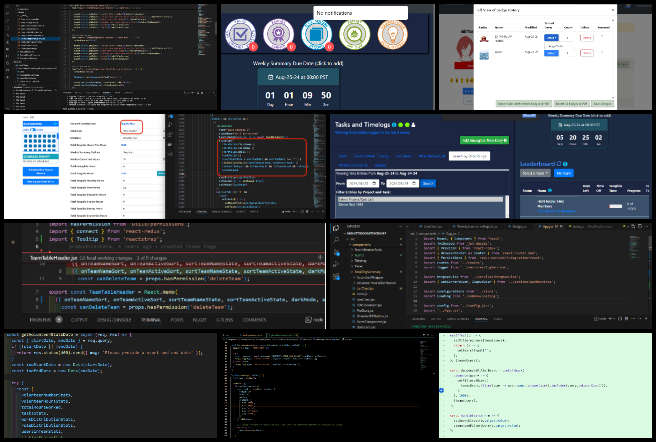
BLUE STEEL SOFTWARE DEVELOPMENT TEAM
The Blue Steel Team’s summary, presenting their work on the Highest Good Network software was managed by Jingyi Jia (Software Engineer, Team Manager), and includes Parth Rasu Jangid (Software Developer), Ramakrishna Aruva (Software Engineer), Tzu Ning “Leo” Chueh (Software Engineer), and Vishavdeep Kaur (Full stack Developer). The Highest Good Network software is how we’ll be managing and objectively measuring our process for growing the interconnectedness of human systems through our social architecture, construction, production, and maintenance processes. This week, Parth reviewed and approved multiple pull requests, specifically PR 2547, PR 2561, PR 2614, and a combined PR 2572 + 1082. He also advanced his work on writing unit tests for the task controller, focusing on the updateNum and moveTask functions. Ramakrishna worked on refining his code by segregating changes related to his fixes and addressing feedback for a pull request which involved transitioning from class to functional components in React, implementing modern React standards like useState and useEffect to replace traditional lifecycle methods. Vishavdeep evaluated PR 2488 and completed tests on several PRs, including PR 2588 and PR 2589, resolving conflicts and merging the branch “vishav-Fix-TIMELOG-PAGE-UI-issues-for-375px-and-up” into the development branch. Jingyi enhanced the leaderboard time off indicator by fixing a display issue and refining the indicator’s positioning and formatting, ensuring it accurately shows time off statuses for team members. This collective effort contributed to growing the interconnectedness of human systems by improving the functionality and user experience across various components. Meanwhile, Tzu Ning resolved a WebSocket communication error by properly structuring messages to include the necessary user identifiers, correcting the “Unknown operation” error previously encountered. See the Highest Good Society and the Highest Good Network pages to learn more on how their work contributes to growing the interconnectedness of human systems. See below to view images of their work.
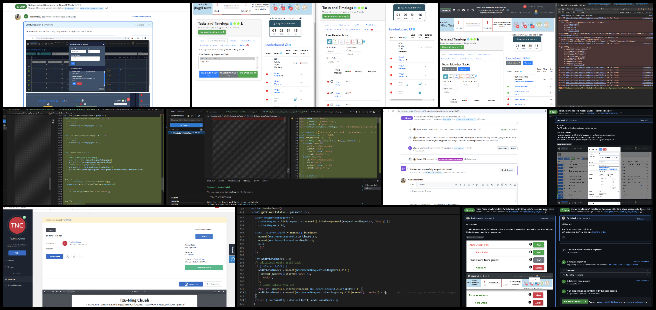
CODE CRAFTERS SOFTWARE DEVELOPMENT TEAM
The Code Crafters Team’s summary, covering their work on the Highest Good Network software, was managed by Summit Kaushal (Backend Software Developer) and includes Ambika Kabra (Software Engineer), Chetan Sunku (Software Engineer), Ishan Miglani (Software Engineer), Niketha Anand (Software Engineer), Pranay Netha Guda (Software Engineer), Shadhrush Swaroop (Software Engineer), Rama Srikanth Kotaru (Software Engineer), and Xiaoyu (Ivy) Chen (Software Engineer). The Highest Good Network software is how we’ll manage and objectively measure our process for growing the interconnectedness of human systems through our social architecture, construction, production, and maintenance processes.
Ivy worked on completing tasks related to previous pull requests for both the frontend and backend of the Highest Good Network application. She addressed differences in action files and updated related files, resolving conflicts, lint errors, and issues with the isSet function and dispatch functions. Ivy also identified and corrected a branch issue, updated the backend to align with the frontend, and collaborated with team members, including Jae, to expedite the merging process, growing the interconnectedness of human systems. Ambika implemented four pull requests, addressing console errors, creating a hotfix for the Core Team’s blue square letter and unique hours additions, and resolving user profile display issues. She also documented her work through Loom videos and contributed to the frontend and backend updates. Niketha worked on the “Rotate Indefinitely After Adding Project” task, ensuring proper functionality of the rotate icon after a project is added.
Summit coordinated team efforts through Slack, finished testing for PR 2572, reviewed and tested several PRs, and continued debugging the streak badge task, focusing on code logic and functionality. Shadhrush worked on the backend PR for the “Send Emails” feature and began addressing data loading delays on the Leaderboard, planning to add a spinner for user feedback. Pranay focused on reviewing multiple PRs and resolved a bug that allowed users to assign and delete multiple teams without saving after each action. Ishan addressed a formatting bug on the user profile page and raised and submitted PRs related to dashboard summary bar behavior and Teams Table adjustments, growing the interconnectedness of human systems through these improvements. He reviewed PRs to ensure text visibility in dark mode. Chetan continued investigating an issue with the weekly summary tabs, specifically the unexpected redirection back to the main dashboard. Rama focused on Bell Icon features in the Dashboard, documented three new features with Jae, and worked on a bug related to an off-by-one start date inaccuracy, which remains unresolved. See the Highest Good Society and Highest Good Network pages for more on how this relates to growing the interconnectedness of human systems. The collage below shows some of this work.
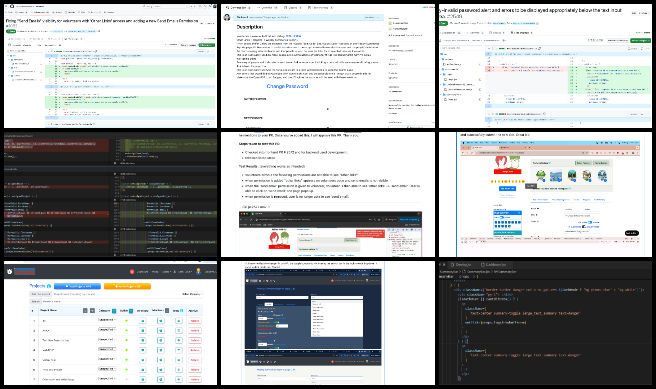
DEV DYNASTY SOFTWARE DEVELOPMENT TEAM
The Dev Dynasty Team’s summary, covering their work on the Highest Good Network software, was managed by Nahiyan Ahmed (Full Stack Software Developer) and includes Anuj Vakil (Software Engineer), Harsh Bodgal (Software Engineer), Howie Miao (Software Engineer), Jatin Agrawal (Software Engineer), Manikrishna Sanganabatla (Software Engineer), and Sailavanya Narthu (Software Engineer). The Highest Good Network software is how we’ll manage and objectively measure our process for growing the interconnectedness of human systems through our social architecture, construction, production, and maintenance processes.
Anuj progressed on the sort inventory button, nearing completion despite initial setup issues, which he resolved by reinstalling necessary components. Harsh updated filters to meet new API specifications, refined them according to clarified requirements, and addressed compatibility issues by testing appropriate integration packages. Howie encountered technical difficulties such as network interruptions and VSCode crashes, which hindered his progress on two new bug assignments; however, he made headway on the system date issue. Jatin dedicated 20 hours to pull requests and bug fixes, finalizing several PRs, including both backend and frontend tasks, and created pull requests for two assigned tasks. He also spent ten hours addressing an issue from HGN bug reports, resulting in a pull request currently under review, with further reviews scheduled for Saturday. All these efforts contribute to growing the interconnectedness of human systems. Nahiyan compiled PR 2614, optimized the dashboard for mobile viewing, resolved alignment issues, and added a new dropdown selector for enhanced usability across devices. Sailavanya worked on resolving a blank page issue related to ‘Selecting Featured Badges’, updated the BadgeReport.jsx file, and ensured that the saved changes functionality worked correctly, with the code awaiting review. See the Highest Good Society and Highest Good Network pages for more on how this relates to growing the interconnectedness of human systems. The collage below shows some of this work.
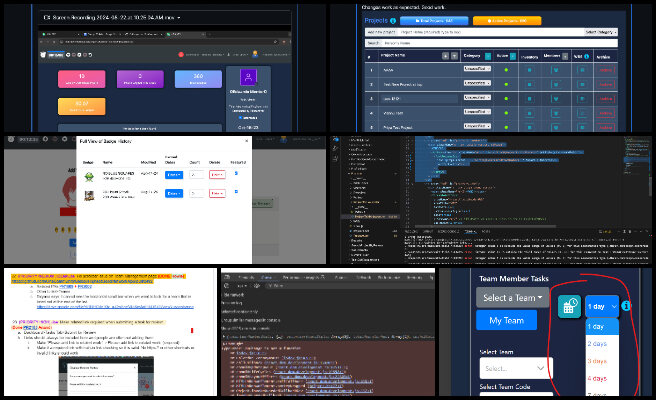
EXPRESSERS SOFTWARE DEVELOPMENT TEAM
The Expressers Team’s summary, covering their work on the Highest Good Network software, was managed by Christy Guo (Software Engineer) and includes Mohammad Abbas (Software Engineer) and Reina Takahara (Software Developer). The Highest Good Network software is how we’ll manage and objectively measure our process for growing the interconnectedness of human systems through our social architecture, construction, production, and maintenance processes. This week, Christy focused on enhancing the unit tests and integration tests for the teamController. She also worked on resolving errors in the test cases to ensure their accuracy and reliability. Mohammad focused on refining the badge management’s frontend and spent time to enhance its functionality. Reina enhanced the UI for the badge management page by adding sorting icons and implementing a filtering feature to improve user experience. See the Highest Good Society and Highest Good Network pages for more on how this relates to growing the interconnectedness of human systems. See the collage below for the team’s work this week.
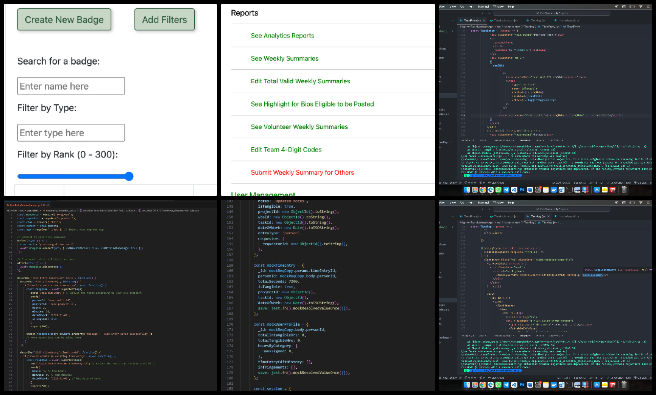
MOONFALL SOFTWARE DEVELOPMENT TEAM
The Moonfall Team’s summary, covering their work on the Highest Good Network software was managed by Lu Wang (Software Engineer) and includes Ankit Lall (Software Engineer), Anne Zhang (Software Engineer), Gaurav Setty (Software Engineer), Satya Shanthi Tadiparthi (Software Engineer), Shrada Chellasami (Software Engineer), and Yili Sun (Software Engineer). The Highest Good Network software is how we’ll be managing and objectively measuring our process for growing the interconnectedness of human systems across our social architecture, construction, production, and maintenance processes. This week, Ankit wrote unit tests for nine frontend components within the Formatted Reports module, covering various aspects including prop passing, accurate state handling, proper triggering of dispatch functions, functioning of async operations, activation and reflection of URLs, and correct display of icons and messages. Anne worked on the badge deletion issue where badges, once deleted by an admin, still appeared on the user’s profile despite their removal from the database, confirming through backend API testing that it was a frontend issue, and continued pinpointing the specific cause and effects on display, particularly focusing on edge cases, all while growing the interconnectedness of human systems. Gaurav focused on performing PR reviews and further improving his understanding of the codebase. He documented each review, captured relevant screenshots, and uploaded them to Dropbox for reference. He worked on the following PRs: #2587, #2588, #2589, #2591, #2596, #2597, #2601, #2604, #2608, #2610. Lu worked on writing and refining unit tests for the `PeopleReport/components/PeopleTasksPieChart.jsx` component. She redesigned the test cases for the selector functions to ensure data filtering and processing aligned with the latest requirements. Lu addressed issues related to rendering and data binding within the chart, improving both performance and visual accuracy. She also expanded the test cases to cover more edge cases, enhancing overall test coverage, particularly regarding state management and asynchronous data handling errors, thus contributing to growing the interconnectedness of human systems. Alongside these technical tasks, Lu completed her team management responsibilities, including reviewing her teammates’ work. Satya focused on resolving a bug related to the modal efficiency for assigning teams within the application. The main issue was that the “Save Changes” button remained active after a team was assigned, which was unnecessary and confusing for users. Additionally, the modal did not close automatically after the team was added, which slowed down the workflow. Satya worked on modifying the necessary components to ensure the modal closes after a team is assigned and that the “Save Changes” button is disabled appropriately after the team assignment. Also created PR for this bug. This enhancement contributes to growing the interconnectedness of human systems by streamlining user interactions. Shrada updated past bugs on the HGN Phase I Bugs and Needed Functionalities page, focusing on resolving dropdown upload issues, worked on a new bug fix by analyzing the code and problem, and determined with Jae the best approach to prevent overlap by updating the placement of the dropdown with suggested team codes. Yili addressed an issue on the team management page where the active status indicator did not update until the page was refreshed, implementing a fix that ensured the indicator’s color changed immediately upon clicking to reflect the updated status (green for active, grey for inactive) without needing a page refresh, updated information in both confirmation and notification pop-ups to provide more specific details about the operation being performed, and fixed the related unit test while creating the pull request. See the Highest Good Society and Highest Good Network pages for more on how this relates to growing the interconnectedness of human systems. Below is a collage for the team’s work.
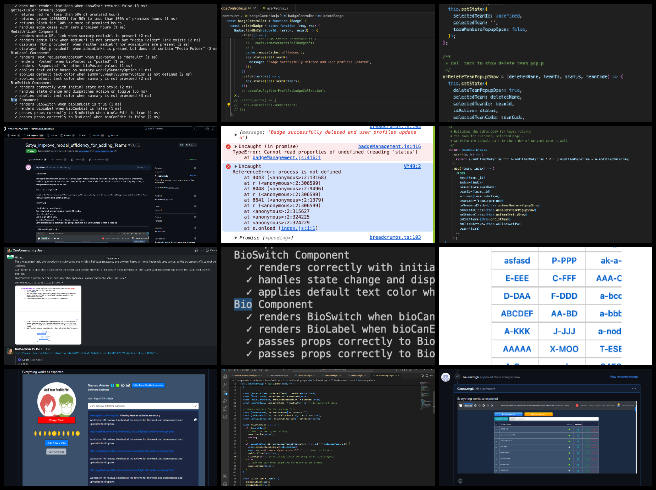
REACTONAUTS SOFTWARE DEVELOPMENT TEAM
The Reactonauts Team’s summary, covering their work on the Highest Good Network software was managed by Changhao Li (Software Engineer) and includes Dhairya Mehta (Software Engineer), Diya Wadhwani (Software Developer), Hetvi Patel (Software Engineer), Gmon Kuzhiyanikkal (Software Engineer), Jinxiong You (Software Developer), Peterson Rodrigues dos Santos (Full-Stack MERN Stack Developer), and Vijeth Venkatesha (Full Stack Developer). The Highest Good Network software is how we’ll be managing and growing the interconnectedness of human systems across social architecture, construction, production, and maintenance processes. This week, Changhao focused on unit test development and management of the software development team, assisting with issues related to test verification for `timeentry.jsx`, while also addressing review requests for previous pull requests. He updated unit tests and adjusted local tests as needed, hosted the weekly team meeting, and organized the weekly folder for photos and videos.
Dhairya worked on resolving the “Fix Projects find user function” task by identifying the root cause of the user discovery issue and developing a sort and search function for optimizing user assignment, growing the interconnectedness of human systems. Diya fixed bugs related to badge deletion and PDF export, raising PR #2604. Gmon addressed a bug on the Projects Reports page, improving the view for tasks with multiple resources and preparing a pull request with supporting media. Hetvi enhanced a script for managing relationships in the database and refined search engine forms. Jinxiong reviewed five PRs and fixed bugs in the HGN App, including timer issues on key pages, further growing the interconnectedness of human systems.
Nikhil completed 12 pull requests, contributing to both front-end and back-end development, while Peterson added a new “Members” column in the “Teams” tab of the “View Profile” section, with some functionality still in progress. Vijeth focused on team management, badge management issues, and reviewing the dashboard for bugs. See the Highest Good Society and Highest Good Network pages for more on how this relates to growing the interconnectedness of human systems. See the collage below for the team’s work this week.
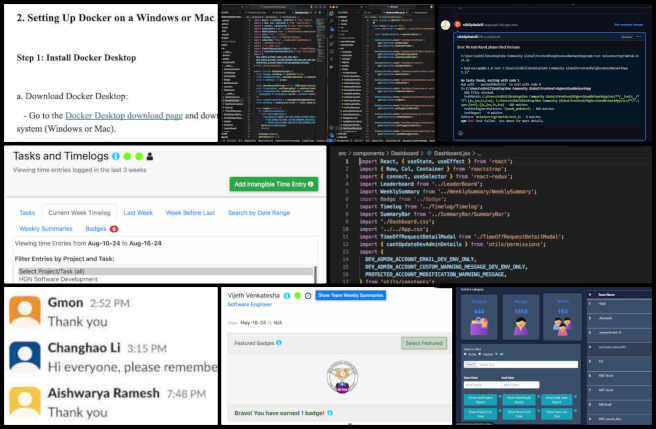
SKYE SOFTWARE DEVELOPMENT TEAM
The Skye Team’s summary, covering their work on the Highest Good Network software was managed by Luis Arevalo (Software Engineer) and includes, Abi Liu (Software Developer), Angela Cheng (Full Stack Developer), Gowtham Dongari (Software Engineer), and Youyou Zhang (Full Stuck Developer). The Highest Good Network software is how we’ll be managing and growing the interconnectedness of human systems on social architecture, construction, production, and maintenance processes. This week, Abi updated the backend API for the overview reports statistics, incorporating query parameters to enable growth comparison. He adjusted the volunteer numbers statistic query to reflect these changes, updated the route, and resubmitted a pull request for the map locations unit and integration tests using the latest development branch.
Angela focused on HGN Software Development, researching the transition from OnlyWire, particularly with Pinterest, and set up a testing account while awaiting approval. She also enhanced the email function to support batch sending and worked on testing the “test send” option, allowing a preview of blog posts to be sent to a designated email before final distribution. Angela documented these updates with detailed pull requests for both backend and frontend repositories, contributing to growing the interconnectedness of human systems through these enhancements.
Keshav addressed eight pull requests, tested them in dark/light mode, and made necessary adjustments for optimal performance, with the reviewed pull requests including 2596, 2597, 2601, 2604, 2606, 2609, 2610, and 2614. Luis added an email feature to the warnings component, consulted Ivy for guidance, and resolved the issue, successfully setting up boilerplate code to send an email when a third warning is issued to a user. See the Highest Good Society and Highest Good Network pages for more on how this relates to growing the interconnectedness of human systems. See the collage below for the team’s work this week.
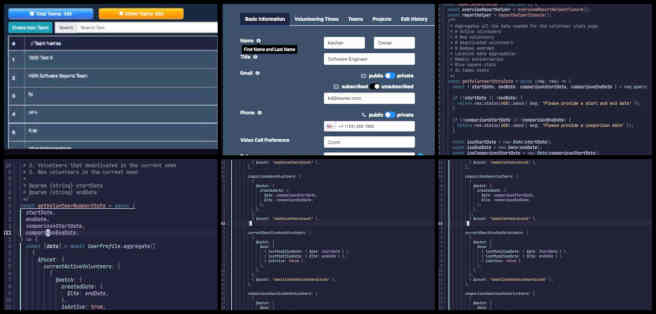
SOFTWARE PR REVIEW TEAM A-I
The PR Review Team’s summaries for team members’ names starting with A-I and covering their work on the Highest Good Network software was managed by Vibhav Chimatapu (Data Analyst/Admin Assistant). The Highest Good Network software is a foundation of what we’ll be using to measure our results for growing the interconnectedness of human systems. This week’s active members of this team were: Abdelmounaim Lallouache (Software Developer), Ajay Kumar Reddy (Software Engineer), Carl Bebli (Software Engineer), Yixuan (Ethan) Han (Software Developer), Haoyue Wen (Software Engineer), and Ishan Goel (Software Engineer). They reviewed all the Highest Good Network PRs (Pull Requests) shared in this week’s update. Learn more about how the Highest Good Network will measure and assist in growing the interconnectedness of human systems in the Highest Good Network open source hub. The collage below shows a compilation of the work from this team.
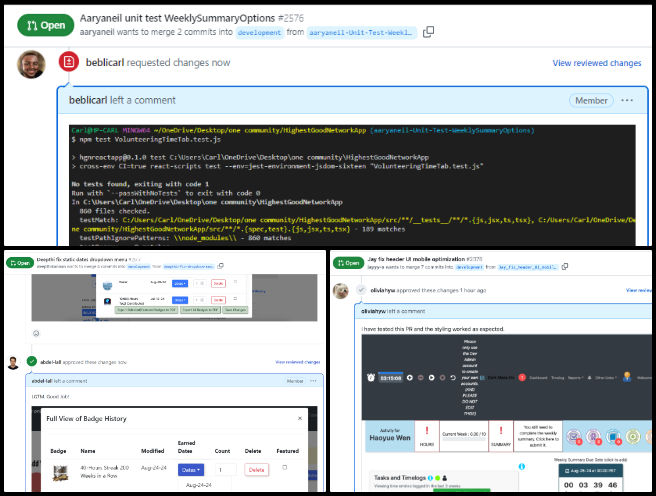
SOFTWARE PR REVIEW TEAM J-Q
The PR Review Team’s summary for team members’ names starting with J-Q and covering their work on the Highest Good Network software was managed by Saumit Chinchkhandi (Administrative Assistant and Software Engineer). The Highest Good Network software is a foundation of what we’ll be using to measure our results of growing the interconnectedness of human systems. This week’s active members of this team were: Kurtis Ivey (Software Engineer), Lin Khant Htel (Software Developer) and Nathan Hoffman (Software Engineer). They reviewed all the Highest Good Network PRs (Pull Requests) shared in this week’s update. Learn more about how the Highest Good Network will measure and assist in growing the interconnectedness of human systems in the Highest Good Network open source hub. The collage below shows a compilation of the work from this team.
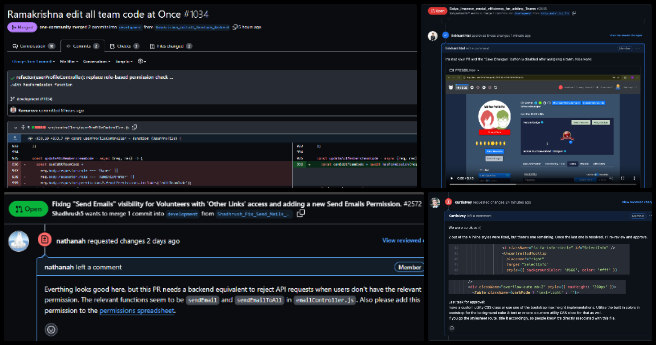
SOFTWARE PR REVIEW TEAM R-S
The PR Review Team’s summary for team members’ names starting with R-S and covering their work on the Highest Good Network software was managed by Olawunmi “Ola” Ijisesan (Administrative and Management Support) and Mrudula Chavali (Administrative Assistant and Data Analyst). The Highest Good Network software is a foundation of what we’ll be using to measure our results of growing the interconnectedness of human systems. This week’s active members of this team were: Sai Preetham Dongari (Full Stack Developer), Shefali Mittal (Volunteer Software Engineer), Saniya Farheen (Software Engineer), Shuddhendu Mishra (Software Engineer), Swathi Dharma Sankaran (Software Engineer), Snehal Dilip Patare (PR Reviewer). She reviewed all the Highest Good Network PRs (Pull Requests) shared in this week’s update. Learn more about how the Highest Good Network will measure and assist in growing the interconnectedness of human systems in the Highest Good Network open source hub. The collage below shows a compilation of the work from this team.
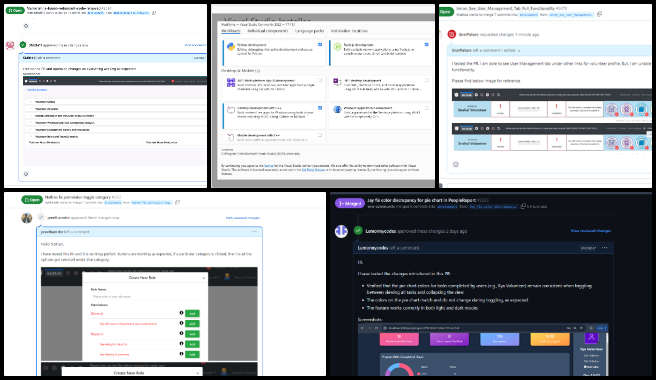
SOFTWARE PR REVIEW TEAM T-Z
The PR Review Team’s summary for team members’ names starting with T-Z and covering their work on the Highest Good Network software was managed by Olawunmi “Ola” Ijisesan (Administrative and Management Support) and Samarth Urs (Administrative Assistant and Data Analyst). The Highest Good Network software is a foundation of what we’ll be using to measure our results of growing the interconnectedness of human systems. This week’s active members of this team were: Vishnu Priya Atheti (Software Engineer) and Yiyun Tan (Software Engineer). They reviewed all the Highest Good Network PRs (Pull Requests) shared in this week’s update. Learn more about how the Highest Good Network will measure and assist in growing the interconnectedness of human systems in the Highest Good Network open source hub. The collage below shows a compilation of the work from this team, emphasizing their efforts in growing the interconnectedness of human systems.
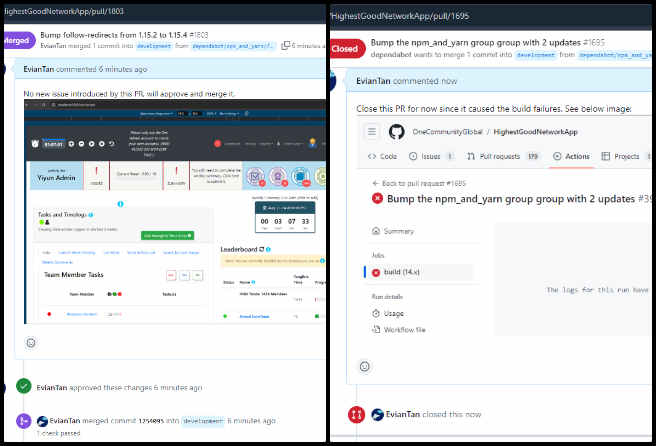
AND WE PRODUCED THIS WEEKLY UPDATES BLOG – CLICK HERE TO SUBSCRIBE
FOLLOW ONE COMMUNITY’S PROGRESS (click icons for our pages)










INVESTOR PAGES
OVERVIEW | LOCATION | FUNDING
GET INVOLVED
DONATE | WAYS ANYONE CAN HELP | MEMBERSHIP
CLICK HERE FOR ALL PAST UPDATES

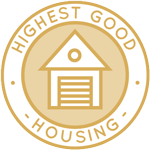 One Community is growing the interconnectedness of human systems through Highest Good housing that is artistic and beautiful, more affordable, more space efficient, lasts longer, DIY buildable, and constructed with healthy and sustainable materials:
One Community is growing the interconnectedness of human systems through Highest Good housing that is artistic and beautiful, more affordable, more space efficient, lasts longer, DIY buildable, and constructed with healthy and sustainable materials: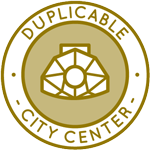 One Community is growing the interconnectedness of human systems through a Duplicable and Sustainable City Center that is LEED Platinum certified/Sustainable, can feed 200 people at a time, provide laundry for over 300 people, is beautiful, spacious, and saves resources, money, and space:
One Community is growing the interconnectedness of human systems through a Duplicable and Sustainable City Center that is LEED Platinum certified/Sustainable, can feed 200 people at a time, provide laundry for over 300 people, is beautiful, spacious, and saves resources, money, and space: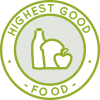 One Community is growing the interconnectedness of human systems through Highest Good food that is more diverse, more nutritious, locally grown and sustainable, and part of our open source botanical garden model to support and share bio-diversity:
One Community is growing the interconnectedness of human systems through Highest Good food that is more diverse, more nutritious, locally grown and sustainable, and part of our open source botanical garden model to support and share bio-diversity: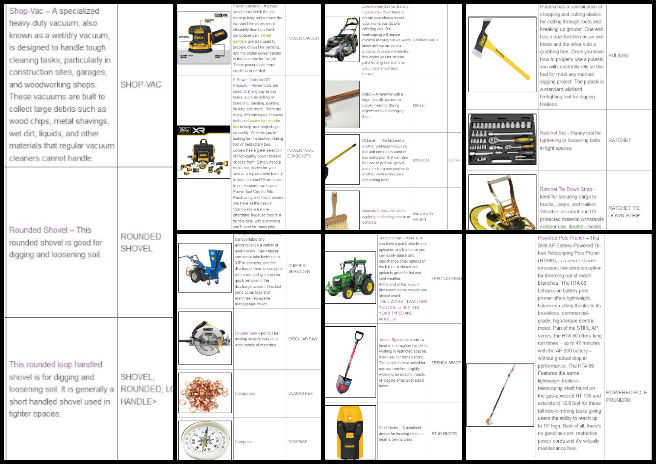
 One Community
One Community